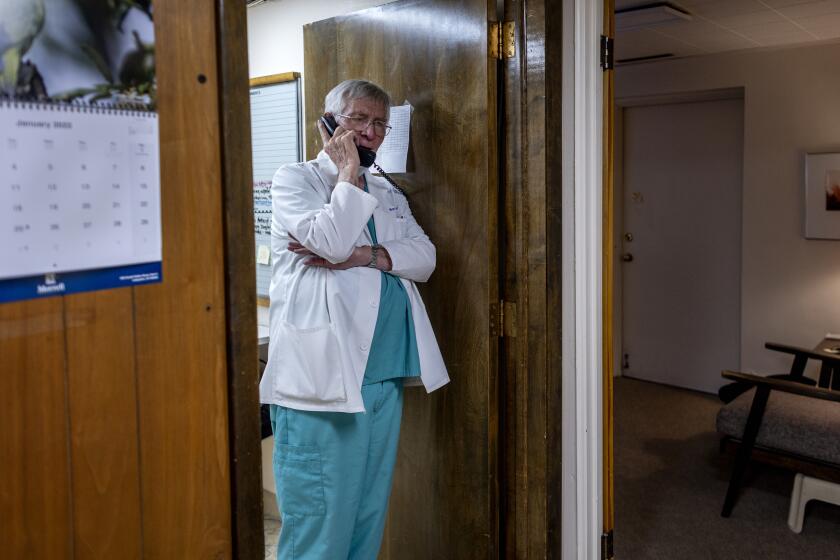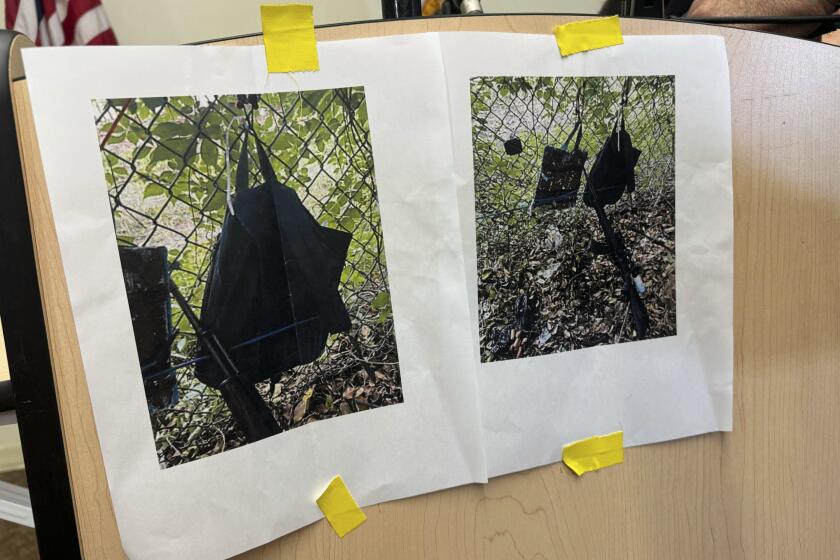Op-Ed: In praise of bus travel, the least glamorous but most lovable way to travel
Some 40 million people ride intercity buses in the U.S. every year, and I’m one of the regulars. On Thanksgiving Day (poor planning), my kids and I will take a five-hour ride to visit my parents. Or eight hours, depending on traffic.
The thinly upholstered seats have a bucket curve that subtly insults the human skeleton. In the bristles are no doubt microbes more diverse than even our great nation. The motor coach is far and away the least glamorous way to travel — but also, perhaps, the most lovable.
In his lecture series “The Four Loves,” C.S. Lewis borrows the Greek word storge to describe the affection we bear ratty armchairs and wheezing dogs, familiar and unexceptional things. Storge is not proud. Lewis says that if you ever were to put that ratty armchair out on your front lawn in daylight, you’d feel a little ashamed. But while you’re in that chair, unseen — with a pipe or Netflix — it is your dearest friend.
[Buses] seem to represent a strange zone of freedom from everything: lawsuit culture, maternal anxiety and government scrutiny.
Same with the bus. Riders cultivate blindness to its nonsterile aspects, enjoying instead our working Wi-Fi and shrewd thrift. (BoltBus offers tickets from L.A. to San Francisco for a mere $23.) I once heard a man scold a woman for talking on her phone; other riders swiftly told him to leave her alone. The only pronounced intolerance among bus travelers is for finickiness, fault-finding and controlling nanny-state stuff.
Given the quirks of the clientele, it seems fitting that buses, unaccountably, were spared the security crackdown that followed the 9/11 attacks. They allow riders to pay with cash without showing IDs; bags are not scanned; people are never frisked. Most buses don’t even have seat belts, much less space for children’s car seats. They seem to represent a strange zone of freedom from everything: lawsuit culture, maternal anxiety and government scrutiny. In liberating riders from name-rank-serial-number accountability, buses exhibit a pleasing lawlessness.
This can tilt into outright contrarianism. After years of busing it with kids, I’ve found that riders reject the moral imperative to genuflect before mothers and children, give up seats for them, accommodate their soiled diapers, bulky strollers and infinite forms of parental entitlement. If you want to sit with two or more humans under 10 you need to aggressively commandeer — to the legit resentment of other riders — the tight communal seats by the bathroom, where the honest scent of urine meets the duplicity of Febreze. The movies on offer are sometimes wildly inappropriate for families; a friend swears she once saw a slasher flick.
The message is plain: The ideal bus rider is not me, with kids and gear. Instead, he’s a solo male, with a small shoulder bag and a window seat: a mid-century figure, romantically lonely, gazing out at the debasement of America, humming his song of himself.
Greyhound, the first bus line in the U.S., was founded in 1914 by Carl Eric Wickman, a Swedish immigrant to Minnesota. When he lost his job as a miner in Hibbing, he fixed up a homely car model that never sold — it looked like a six-window railroad car perched on an uncertain chassis from “Downton Abbey” — and started driving his former colleagues to the saloons in a hamlet called Alice. For what was essentially a crosstown Hibbing-Alice service, Wickman charged his passengers 15 cents. (A gallon of gas cost about 12.) Four years later, Wickman owned eight buses and was making $40,000 per year — enough, today, to bus it up and down the Pacific Coast 1,739 times.
Greyhound Lines, Inc. — though its parent company is headquartered in Scotland — is now a national treasure. It has alliances with everything I imagined as its competition (Trailways, Jefferson Lines, Indian Trails, Peter Pan) and also operates Amtrak’s Thruway Motorcoach. Reddit and other yappy sites are filled with young, thrifty types weighing in on stations and bus lines, mostly sharing tips and tricks for how to endure the bus, game it or enjoy it.
No one on the bus discussions fails to point out that, for good and ill, intercity buses transport all kinds. If you’re riding intercity this holiday, you might keep election discussions to mute texting, and not tempt fate by assuming you and your seatmate are of a mind ideologically. The high probability of personal conflict among people of such heterogeneous backgrounds is why the quintessential bus devotee, the kind who used to “ride the dawg” — take Greyhound buses all over the country — cultivates detachment and disaffection, while sleeping with one eye open.
Even when I’m with my kids, who usually nod off, there’s a sweet way the self disappears during bus travel. I could be anyone. My seat has no number. There’s an emotional reprieve here, on the long road between the rush to leave town and the emotional obligations of my hometown. All of that seems far away. There’s just a third granola bar, the landscape and the money I’ve saved.
Virginia Heffernan is the author of “Magic and Loss: The Internet as Art.”
Follow the Opinion section on Twitter @latimesopinion and Facebook
More to Read
A cure for the common opinion
Get thought-provoking perspectives with our weekly newsletter.
You may occasionally receive promotional content from the Los Angeles Times.










